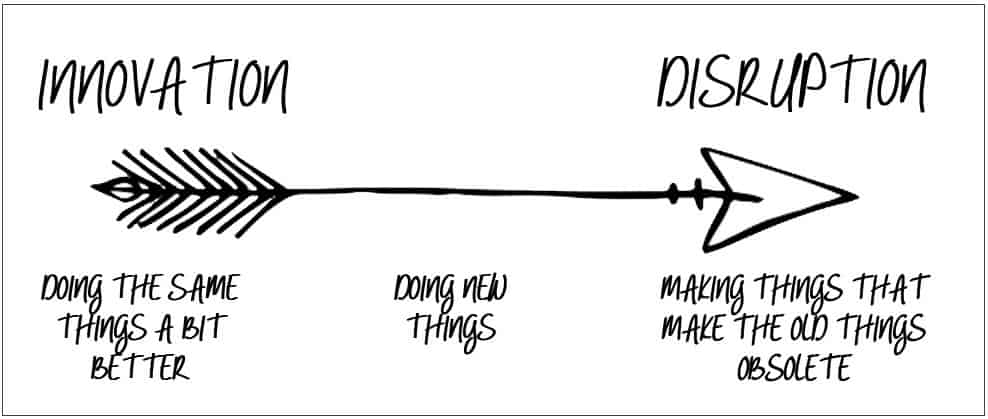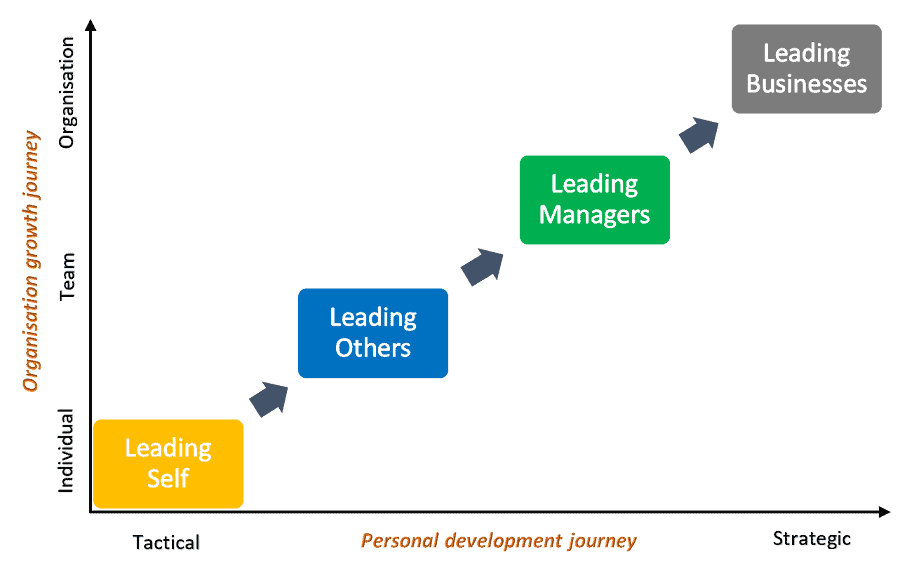By Dr Arul Aruleswaran
Source: Leaderonomics

Today we are in the era where the world is in fact in the palm of our hands. Smartphones or mobile technologies have changed the way we live and disrupted various industries from agriculture to the plantation, manufacturing to supply chain, retail to travel, photography to video blogging, and many others.
The introduction of mobile technology-enabled service providers to get closer to its customers brought about the development of various applications and solutions to the point where almost all industries and their leaders talk about digital transformation, establishing a sense of urgency and building the case for change.
Technology and digitization employed by Uber, Netflix, or iTunes have displaced the incumbent industry or provider to the point of extinction. Driven leaders want the digital transformation to be disruptive as illustrated below in Figure 1.

What does this mean in terms of leadership?
Does every organisation need to have its own Steve Jobs? Or a superstar leader in order to bring about disruption to the industry that they are targeting.
An interesting survey done by KPMG Technology Innovation in 2018 reported that in most organisations globally, the function and responsibility to drive this transformation is someone from the C-level of an organisation and statistics showed that it is led by the Chief Information Officer (CIO).
It is important to remember that disruption (as illustrated in Figure 1) through digital technology is about the continuous cycles of improvements and innovations and it is not pre-determined by a singular event that drove innovation prior to the year 2000.
In years prior to that, an innovative company such as DuPont or Dell Computers was considered a top league organisation in the S&P 500 ranking. The typical lifespan then for these companies to remain in the Fortune 500 list can be anywhere between 20 to 50 years.
Today, companies such as Facebook and PayPal are on the list displacing organisations that once had been there for many years. The average lifespan of the S&P 500 companies is expected to reduce from 35 years in the 1960s to 20 years in 2000 to 10 years in 2025 (Source: www.innosight.com).
This could mean that almost 25 percent of businesses will drop out of that list every 10 years. This trend only strengthens the notion that leaders in organisations today need to strongly focus on customer centricity and use technology as the enabler to disrupt and stay ahead of their competitors.
The concern isn’t about remaining in the S&P 500 list but more about the risk of becoming completely obsolete.
Organisations that drive their growth based on traditional indicators such as top-line growth or operating margins are likely to find themselves susceptible to being disrupted by start-ups or become a value proposition for a merger and acquisition.
What should a leader in an organisation do if it is in an industry that is to be affected by digital disruption? Does the leadership start seeking out the best CIO and delegate the entire transformation responsibility to this person? Or does it establish a team that can collaborate and actively find a way to reinvent itself?
This reinventing has to happen not once a decade or once in 5 years. Depending on the industry, this change needs to happen from every year to every other year in order to stay ahead of disruption.
Industries that are at risk to be disrupted can be seen below in the research report by IMD’s Global Center for Digital Business Transformation.

What is unique about disruption is the opportunity for what one would call ‘complementary disruption’. It simply means that a leader in an organisation responsible for digital transformation need not rebuild the entire business or its ecosystem from scratch but instead leverage available and robust disruption that is already ahead of its time.
The example at the start of this article where businesses leverage the smartphone and mobile technology eco-system to get closer to their customers is an example of such disruption. The subsequent ideas developed from the mobile technology application simply created more value to the original disruption.
Another good example is the decision of Amazon and Alibaba to venture into the logistics and last-mile delivery market space. These giants had already disrupted the retail market through their e-commerce platform but they kept on reinventing themselves to focus on customer value by offering same-day or next-day delivery services. This led to the creation of Amazon’s Prime Logistics and Alibaba’s Cainiao Logistics. Both are now disruptors to the logistics industry.
Nevertheless, to lead digital transformation either with direct disruption or complementary disruption, the leader in the organisation need to develop a culture of leadership at all levels to drive continuous improvement and innovation.
One leadership lesson that comes to mind is that such a leader needs to surround him or herself with a team that will continuously challenge the ideas for disruption and allows ideas to evolve to a point of acceptance in the marketplace. A good leader questions everything and are open to ideas that challenge them.
Leading digital transformation is also a process where individual transformation eventually leads to the development of successful leaders in this digital era. The stages of individual transformation that is even more relevant today are:
- Leading One Self – where the individual leads him or herself at an early age to perform over and beyond the average. In this stage, the individual would focus on building the necessary skillset and competency to perform exceptionally.
- Leading Others – where individuals learn leadership skills by leading teams to solve simple to complex problems and become a leader of high-performance teams. In this stage, the individual should be exposed to the understanding of team performance cycles such as forming, storming, norming and performing based on the Tuckman model of team development.
- Leading Managers – where individuals progress from being team leaders to team managers and manage a team of high performers, fully competent in one’s core competency and acquire knowledge in areas and field outside one’s comfort zone and becoming a high performer.
- Leading Businesses – where an individual truly becomes a leader and a change agent, in this context a disruptor with a strong sense of customer-centricity, collaboration and business acumen with the ability to inspire and influence other leaders and individuals in an organisation.

To put this into practice, a leader could focus efforts to create an environment where leadership thrives and creates an opportunity for ideas to foster and develop. Most importantly, leaders that lead digital transformation understands the simple fact that a business only exists for its customers.


